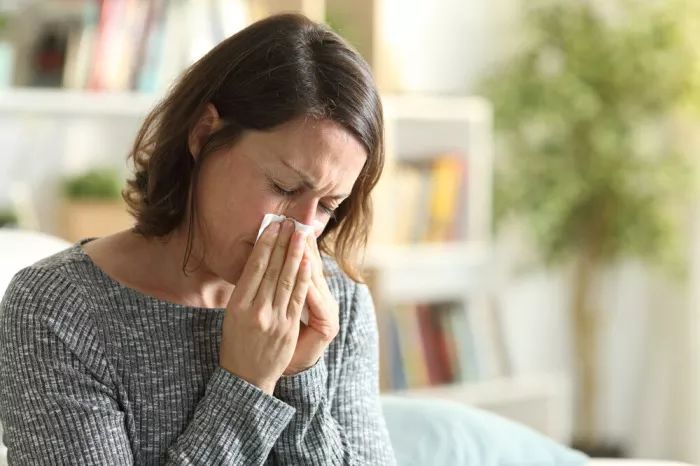Cuts and wounds are common occurrences in daily life, varying in severity from minor scratches to deep lacerations. One of the most concerning aspects of wounds is the possibility of scarring, which can affect both the appearance and functionality of the skin. Understanding the wound healing process and factors influencing scar formation is crucial for patients and healthcare professionals alike. In this article, we will delve into the intricacies of wound healing, the timeline for scar development, and methods to promote optimal healing and minimize scarring.
SEE ALSO: The Best Treatment for Burn Scars: A Comprehensive Overview
1. The Wound Healing Process
The wound healing process is a complex sequence of events involving cellular and biochemical interactions to repair damaged tissue. It generally consists of three overlapping phases:
Inflammatory Phase
This initial phase begins immediately after injury and lasts for a few days. Blood vessels constrict to minimize bleeding, and platelets form a clot to seal the wound. Inflammation sets in, with immune cells migrating to the wound site to remove debris and fight potential infections. Redness, swelling, and heat around the wound are common signs of this phase.
Proliferative Phase
During this stage, which can last from a few days to weeks, the body produces new tissue to close the wound. Specialized cells called fibroblasts synthesize collagen, the main structural protein in the skin, to form a scar tissue matrix. The wound gradually contracts, reducing its size. Epithelial cells at the wound’s edges migrate and multiply to eventually cover the wound.
Remodeling Phase
In the final phase, spanning several months to years, the scar tissue continues to mature and remodel. The excess collagen is broken down, and the scar becomes less visible. The final appearance of the scar depends on various factors, including genetics, wound size, location, and the care given during the healing process.
2. Factors Affecting Scar Formation from a Cut
Many factors can affect the formation of scars from a cut:
Wound Size and Depth
The larger and deeper the wound, the more likely it is to leave a noticeable scar. Deeper injuries involve more tissue damage and may require additional time to heal and remodel.
Wound Location
The location of the wound on the body also influences scar formation. Areas with high tension and constant movement, such as joints or the face, may produce more prominent scars.
Age
Younger individuals tend to heal more efficiently, with less scarring, as their skin has a higher capacity for tissue regeneration. Older individuals may experience slower healing and potentially more visible scars.
Genetics
Genetics play a role in how an individual’s skin responds to injuries and scars. Some people are more prone to developing hypertrophic or keloid scars, where excessive collagen production leads to raised and thickened scar tissue.
Infection and Complications
Wounds that become infected or experience complications during healing are at a higher risk of developing more noticeable scars.
3. Types of Scars
Normal Scars
These scars result from typical wound healing and can range from slightly discolored to nearly invisible. Over time, normal scars often become less noticeable.
Hypertrophic Scars
Hypertrophic scars are raised, red, and thickened, remaining within the boundaries of the original wound. They may improve over time but often take longer to fade.
Keloid Scars
Keloids are similar to hypertrophic scars but extend beyond the original wound site. They are caused by an overproduction of collagen and may be itchy, painful, or even restrict movement.
Atrophic Scars
Atrophic scars are characterized by a sunken appearance, often resulting from the loss of underlying fat or tissue during wound healing. Acne scars are a common example of atrophic scars.
4. When to be Concerned if a Cut is not Scarring
If a cut is not showing signs of healing or scar formation as expected, it may be a cause for concern, and you should consider seeking medical attention. Here are some situations where you should be concerned:
Prolonged Bleeding
If the cut continues to bleed significantly after several minutes of applying pressure, it may indicate a deeper or more severe injury that requires medical evaluation.
Wound Infection
If the cut becomes red, swollen, warm to the touch, and pus starts to form, it could be a sign of infection. Other symptoms may include fever, increased pain, and foul-smelling drainage from the wound.
No Improvement
If the wound has not shown any signs of improvement after a few days or if it appears to be getting worse, medical attention is necessary. Proper healing usually involves a reduction in redness, swelling, and pain over time.
Delayed Healing
Some medical conditions or medications can slow down the wound healing process. If you have a pre-existing medical condition or are taking medications that could affect wound healing, it’s essential to inform your healthcare provider.
Excessive Pain
While some pain is normal with a fresh cut, excessive and unrelenting pain may indicate a more serious problem, such as an infection or nerve damage.
Spreading Redness
If the redness around the wound continues to spread beyond the immediate area, it might be a sign of a more serious infection, like cellulitis, which requires prompt medical attention.
Foreign Objects in the Wound
If you suspect that debris or a foreign object is still present in the wound, do not try to remove it yourself. Seek medical attention to prevent further complications.
Changes in Sensation
If you notice any loss of sensation or changes in sensation (numbness, tingling) around the wound, it could indicate nerve damage and should be evaluated by a healthcare professional.
Persistent Drainage
If the wound continues to produce excessive amounts of fluid or drainage, it could be a sign of an underlying issue.
5. Scar Management and Minimization
After formation, one can take several methods to manage and minimize the scar:
Wound Care
Proper wound care during the healing process is essential to minimize scarring. Keep the wound clean and moist, and follow healthcare professionals’ instructions regarding dressings and ointments.
Sun Protection
Protecting the healing wound from UV radiation is crucial, as sun exposure can cause scars to become darker and more pronounced.
Silicone Gel Sheets and Ointments
These products can help reduce scar thickness and discoloration. Silicone helps create a favorable environment for healing.
Corticosteroid Injections
For hypertrophic or keloid scars, corticosteroid injections can help flatten and soften the scar tissue.
Laser Therapy
Laser treatments can improve the appearance of scars by targeting the skin’s outer layer and promoting collagen remodeling.
Surgical Revision
In some cases, surgical scar revision may be considered, especially for large, unsightly, or functionally limiting scars.
6. Natural and Home Remedies for Scars
Several natural and home remedies may help minimize scarring time and improve the appearance of scars:
Aloe Vera: Aloe vera gel is known for its soothing and healing properties. Applying aloe vera gel to the wound can help reduce inflammation, promote tissue repair, and minimize scarring.
Coconut Oil: Coconut oil has moisturizing and antimicrobial properties, which can support the healing process and prevent infections. Gently massage coconut oil onto the scarred area regularly.
Honey: Honey has natural antibacterial properties and can aid in wound healing. Applying honey to the scar or mixing it with other ingredients like aloe vera can be beneficial.
Vitamin E: Applying vitamin E oil or breaking open vitamin E capsules and applying the oil directly to the scar may help promote skin healing and reduce scar appearance.
SEE ALSO: The Role of Vitamin E in Scar Healing: A Comprehensive Guide
Lemon Juice: The acidic nature of lemon juice can act as a natural exfoliant, helping to remove dead skin cells and promoting skin renewal. However, be cautious if you have sensitive skin, as lemon juice can cause irritation.
Cucumber: Cucumber has hydrating and anti-inflammatory properties that can help reduce swelling and promote healing. Slices of fresh cucumber can be applied to the scarred area.
Onion Extract: Some studies suggest that onion extract creams or gels can help improve the appearance of scars over time. However, more research is needed to establish its effectiveness.
Tea Tree Oil: With its antibacterial properties, tea tree oil can help prevent infection in wounds and promote healing. Dilute tea tree oil with a carrier oil before applying to the scar.
Shea Butter: Shea butter is known for its moisturizing and healing properties. Regularly massaging shea butter onto the scarred area may help reduce its visibility.
Vitamin C: Vitamin C is essential for collagen production, which plays a crucial role in wound healing. Including vitamin C-rich foods in your diet or using vitamin C serums topically may help.
Remember to perform a patch test before trying any new remedy to ensure you don’t have an allergic reaction or sensitivity to the ingredient.
Conclusion
The length of time it takes for a cut to scar varies depending on the wound’s severity, the individual’s healing capacity, and other influencing factors. Understanding the wound healing process and implementing appropriate scar management techniques can significantly improve the final appearance of scars. If you are concerned about scarring, consult with a healthcare professional to receive personalized guidance and care during the healing journey. Remember, patience and consistent scar care can lead to more satisfactory outcomes in the long run.
[inline_related_posts title=”Related Topics” title_align=”left” style=”list” number=”3″ align=”none” ids=”1243,1213,1134″ by=”categories” orderby=”rand” order=”DESC” hide_thumb=”no” thumb_right=”no” views=”no” date=”yes” grid_columns=”1″ post_type=”” tax=””]



































